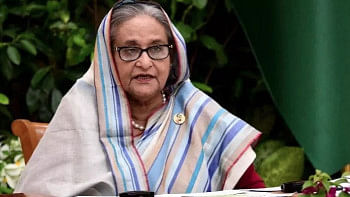What will Bangladesh look like in 50 years?

In a few years, Bangladesh will celebrate its 50 years of independence. When Bangladesh was born in 1971 as a new nation, there was an awful lot of negativity about the economic prospect of Bangladesh. With a starving population and periodic cyclones, 1971's Bangladesh was not rich in minerals or other natural resources. But, with a combination of robust strategy, circumstance, and perhaps a little luck, Bangladesh has transformed itself from an agrarian-based society to an export-oriented and industrial society.
However, one special feature of Bangladesh's economic transformation has been the pro-poor based nature of economic development growth with surprising achievements in health, education, and gender equality indicators. To put these achievements in perspective, compared to India and Pakistan, people in Bangladesh live longer, have healthier lives, and send more of their children (especially daughters) to school. This broader development gain has helped Bangladesh to emerge as a nation of "development surprise", offering practical lessons for the world.
Bangladesh's impressive development gains over nearly the past 50 years have attracted a lot of media and scholarly attention in recent times. But too little is said about how the next 50 years may look like for Bangladesh. In doing so, I identify four critical areas that will likely dominate discussion of Bangladesh's economic and social policies for much of the 21st century.
First, despite the huge success in family planning, population growth remains a major headache for Bangladesh. To accommodate its growing population and the resulting need for urbanisation and industrialisation, Bangladesh is losing an estimated 8,000 hectares of farm land (equivalent to about 11,000 soccer fields) every year. If left unstopped, there will be no cultivable land left in Bangladesh in fifty years, posing a serious threat to the country's food security.
Second, and related to the first, Bangladesh seems poised to become one of the world's consumption superpowers, with a commensurate increase in GDP per capita. However, despite the hope for further materials gains, Bangladesh may lose more from the destruction of its natural capital (e.g. aquifers, forest, ecosystem), resulting in a decline of its wealth per capita. In other words, to increase GDP (which is a flow), Bangladesh is losing its wealth (which is a stock). A 2004 study by researchers at The Beijer Institute for Ecological Economics finds that, in Bangladesh, over the period 1973-2001, wealth per capita grew at a much lower rate (0.3 percent) than GDP per capita (1.88 percent). This doesn't mean that Bangladesh is "consuming too much", rather the production of both capital goods and consumption goods is highly inefficient.
Third, Bangladesh's recent and projected high-growth spurt may fizzle out in the long run due to a combination of unfavourable developments. The political and administrative system of Bangladesh is highly vulnerable to corruption, patronage, and rent-seeking that affect sectors where significant public financing or purchasing is involved. A sort of Gresham's law—that bad money chases out good—is taking effect within the core institutions of the society. At the same time, Bangladesh is missing some thriving civil society institutions that can serve to keep the state and the market honest.
In terms of labour productivity, Bangladesh ranks very unfavourably among neighbouring countries in South Asia. For example, from 1981 to 2010, Bangladesh's output per person employed (a common measure of labour productivity) increased by a mere two-fold, against a 7.4-fold increase in China. This happened because, unlike China, more than two-thirds of Bangladesh's growth came from household consumption and very little from capital investment and skill enhancement. Still, today, the notion of 'productivity gap' and its attendant consequences of slower growth in income are poorly understood in Bangladesh.
Fourth, the rising prices of basic necessities such as housing, education, health care, and transportation are halting the growth of living standards for millions of Bangladeshi households. Millions are still malnourished, can barely afford clothing, and are not as healthy as they should be. But more painfully, very little progress has been achieved in diverting hundreds of thousands of Bangladeshi youths from drug addiction and the like. A country that can punish war criminals against the will of international vested interests seems to be losing its battle against the influence of illegal drug business.
It is no easy task to tackle these underlying problems, especially in the context of Bangladesh's political economy. Nevertheless, researchers are in constant search for finding ways to solve these difficult problems. For example, compact township (agglomerate housing in rural Bangladesh) is recommended as a way to consolidate population, preserve agricultural land, and facilitate economic development. Similarly, through more secure property rights and improved regulation and taxes, public policies can help prevent excessive resource depletion and promote higher genuine investment.
If history is any guide, the odds of failing seem lower for Bangladesh. The good news is that Bangladesh, like other developing countries, has a 'latecomer advantage' in the sense that it can solve many of its problems by imitation and adaptation of technologies that already exist. The bad news is that Bangladesh also faces tremendous obstacles to overcome its problems. Clearly, challenging times lie ahead for Bangladesh.
The writer is an Associate Professor of Economics at East West University, Dhaka. His work can be viewed at www.syedbasher.org.

 For all latest news, follow The Daily Star's Google News channel.
For all latest news, follow The Daily Star's Google News channel. 



Comments